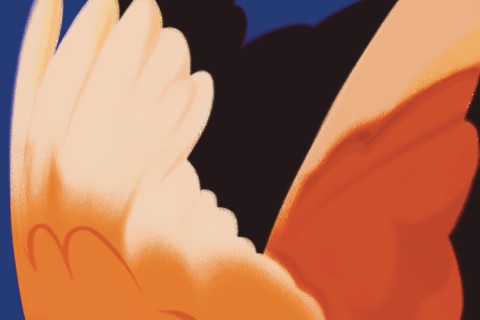Animals in the new creation
Amid weeks with more than their share of bad news, one story before the new year seemed like a glimmer of light in the darkness. The world grabbed onto it: Pope Francis comforting a boy as he grieved the death of his dog, telling the boy he’ll see his dog in heaven.
Except the pope never said that. It didn’t happen.
The story of how the spark of rumor got fanned into flame is interesting, and it’s being told. What I’m wondering about is this: why did people so desperately want this story to be true? What does our fascination with such a story tell us about humanity, about who we are and want we want? I have a few hunches:
- We need this story because we are made for connection with all of creation. A boy grieves the death of his dog, and the pope—named after a saint whose name is almost synonymous with creation connection—assures him that death does not end their communion, that his feelings are legitimate. It’s as if he’s saying: You grieve, and that is right—because your feelings for this creature of God were right. In a world where creation is a commodity and children suffer from nature-deficit disorder, this story speaks to a deep longing—that what we see might not be all there is. Our connection with our pets is a small sign of a deeper unity with all creation that is not meant to end.
- We need it because we are tired of death—the deaths of unarmed black men, of children at the hands of disease, of hostages at the hands of terrorists. We are tired of the hidden deaths of the forgotten elderly and the anonymous homeless and of the self-inflicted deaths of the lonely, bullied, and depressed. We are tired even of the “natural” deaths that take loved ones from our lives. And here, in words a young boy could understand, the pope seemed to say what Christianity has always said but we haven’t always heard: that death is not the last word. If a dog can live again with a boy who loved it—and the boy can live again as well—then maybe there is a force wending its way through the world, a force stronger than death.
- We need it because we long for a healing that “goes all the way down.” Therapy and medication can help me cope with anxiety or depression, and meditation can bring me inner peace. But don’t we long for a healing that goes deeper than any of this, that touches the deep ruptures of society? And wider than this, extending to the rest of creation? A story of a dog going to heaven might seem insignificant, but in such a context it speaks to our yearning for deep, wide healing.
I can see why people latched onto this story, wanted desperately for it to be true.
But even if Pope Francis never said these things, we are still left wondering whether the substance of what he is rumored to have said might be true. Is there still reason for us to hope for connection with creation, the overcoming of death, and a healing that is deep and wide?
I’ll leave it to my theologian colleagues to parse the doctrinal details on eschatology and animal souls. My answer comes from someplace else: from the nativity scenes I saw on dining room tables, in church sanctuaries, and on family room mantles until Epiphany, when the wise men finally made them complete and then we packed them away. The practice of setting up a nativity scene says a good deal about what we believe, and what we can hope for.
Think about the ones you’ve seen. How were the animals arranged? Were they irrelevant, ancillary? No. The camels were on bended knee. The oxen had their heads bowed. The sheep were keeping vigil with the shepherds. They were oriented toward the Christ.
The way we arrange our nativities echoes what Christian art and hymnody have long suggested: that the animals, symbols of all creation, are part of this drama; they belong here. They are drawn into the worship of a child who came to transform all creation, too long marred by division and death, the sting of which even the animals have felt. And if they worshiped him in the manger, why not in the new creation as well—a healed, restored, deathless new creation?
Last week, I packed up my family’s Christmas decorations. Before I could get our Montessori-style nativity set in the box, my five-year-old daughter started playing with it, making the animals talk, bow, and sing “Gloria!” I didn’t stop her or tell her to get real. In a bleak midwinter, this kind of child’s play speaks a truth we badly need.





